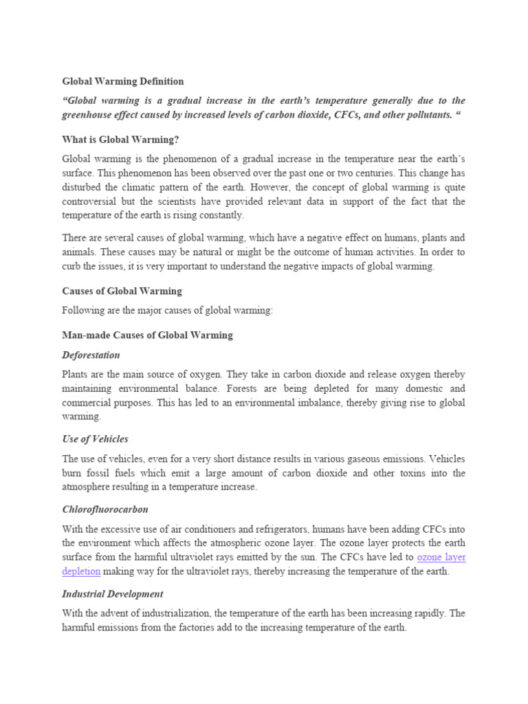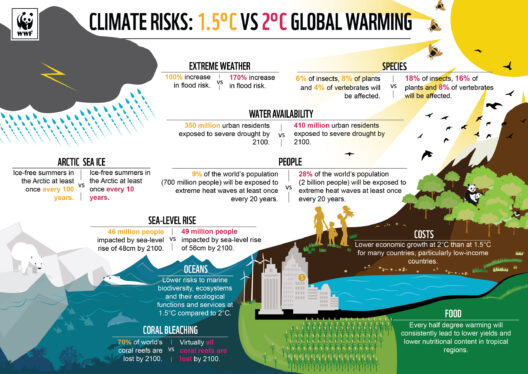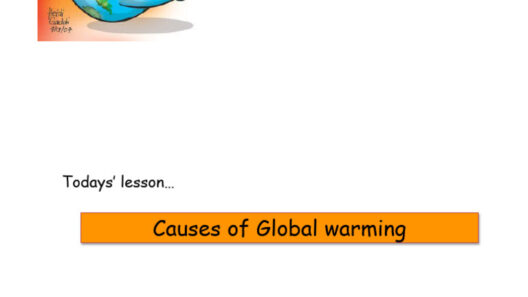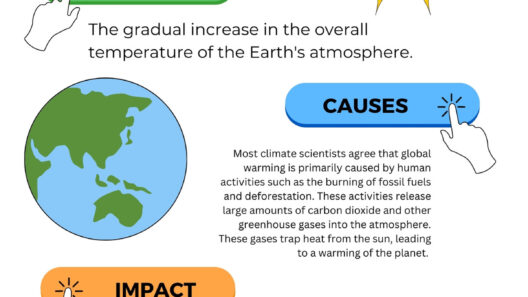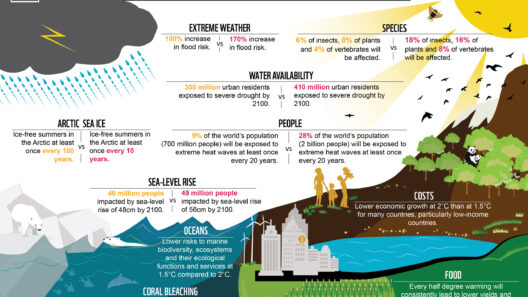In the grand tapestry of our planet’s history, the emergence of anthropogenic climate change presents itself as a formidable brushstroke, rendering a stark contrast against the backdrop of millennia. Global warming, often shrouded in myth and misinformation, is substantiated by an overwhelming consensus among scientists: a consensus that echoes through the halls of rigorous research and empirical evidence. Understanding this critical phenomenon is imperative, not merely for academic discourse but for the survival of ecosystems and humanity alike.
As we peel back the layers of this intricate enigma, we find a compelling narrative illuminated by data, projections, and scientific integrity. Let us embark on this journey to unfurl the truth about global warming, dismantling the prevailing myths that obscure its reality.
Understanding the Climate Puzzle
At the core of the global warming debate lies a petabyte of data: temperature records, ice core samples, and atmospheric analyses converge to form a comprehensive picture of our planet’s climatic dynamics. Like a skilled detective piecing together evidence, scientists have identified a pattern: a significant rise in global temperatures correlating with industrialization and fossil fuel consumption. This correlation is not ephemeral; it is a clear signal, resonating through climate models that provide predictive capabilities for future scenarios.
Yet, the narrative is often convoluted by a cacophony of dissenting voices claiming uncertainty. It is crucial to understand that science evolves not through conjecture but through meticulous investigation and reproducibility of results. The Intergovernmental Panel on Climate Change (IPCC) is but one institution, among many, that distills this vast body of work into digestible reports, unequivocally stating that the evidence for human-induced climate change is “unequivocal.” This clarity serves as the guiding light through the fog of misinformation.
Unmasking the Myths
The myth that “climate is always changing” is a narrative as old as Earth’s geology itself. While it is indeed true that our planet has undergone cyclical climate shifts throughout its history, the present-day alteration is unique in both its velocity and its anthropogenic nature. Unlike natural fluctuations induced by sunspots or volcanic eruptions, today’s crisis is largely orchestrated by human activity, primarily the combustion of fossil fuels, deforestation, and intensive agriculture.
Furthermore, the fallacy that “scientists disagree about climate change” can be likened to claiming that there is a debate among astronomers about the existence of the Earth. Surveys consistently reveal that 97% of climate scientists agree on the human influence on warming, a figure substantiated across multiple studies. This overwhelming agreement is not a mere coincidence; it reflects decades of rigorous research conducted through peer-reviewed processes.
Another pervasive myth worth dismantling is the notion that climate models are unreliable. Far from being whimsical projections, these models incorporate a wealth of data and variable interactions, evolving in sophistication as computational power increases. They are more akin to a finely tuned compass than a vague prediction; they guide us toward understanding potential futures based on current trajectories. Their reliability has been remarkably accurate in retrospect, as seen in past climate projections aligning with observed temperatures.
The Irrefutable Evidence of Change
Empiricism remains the backbone of the scientific method, and in the realm of climate science, it delivers resounding evidence. Noteworthy indicators of climate change manifest in various forms: rising sea levels, shrinking ice sheets, and increased frequency of extreme weather events. Each of these phenomena serves as a striking testament to the rapid alterations underway. The Arctic, for example, which once cloaked itself in a protective layer of ice, now reveals a grim tableau of melting glaciers, a harbinger of coastal erosion and habitat loss.
Warmer ocean waters escalate the intensity and frequency of hurricanes and tropical storms. Regions formerly characterized by reliable rainfall now face unprecedented droughts, leading to agricultural failures and food shortages reminiscent of biblical plagues. Such global consequences ripple through ecosystems, economy, and human health, emphasizing the urgency with which we must address climate change.
Moreover, the coalition of environmental impacts borne from global warming cannot be overstated. Biodiversity loss as habitats transform, shifting migration patterns of species, and the acceleration of extinction rates present a clear warning: the interdependencies of life are fraying. Every degree of warming bears the potential to unhinge subtle ecological balances, forcing species to adapt or vanish.
A Call to Action
As stewards of this planet, acknowledgment of the overwhelming consensus on global warming lays the groundwork for collective action. The narrative must evolve from one of apathy to vigilance, urging systemic changes through advocacy, policy reform, and innovation. Transitioning to renewable energy sources, embarking on reforestation projects, and supporting sustainable agricultural practices are steps that can pivot humanity toward a warmer, yet habitable future.
In unmasking the myths surrounding climate change, we embrace an empirical truth that transcends political divides and societal boundaries. It is a message of urgency, persistence, and hope—a call to unite under a shared vision of stewardship over our planet. As we stand on the precipice of climate catastrophe, we possess the tools and knowledge necessary to alter the course of our narrative. The time for complacency has passed; the time for action is at hand.



